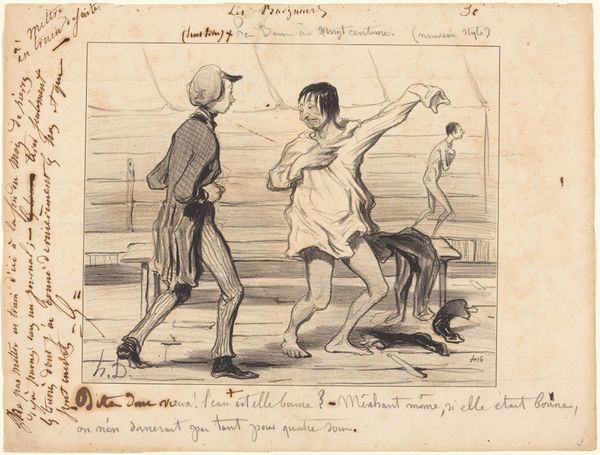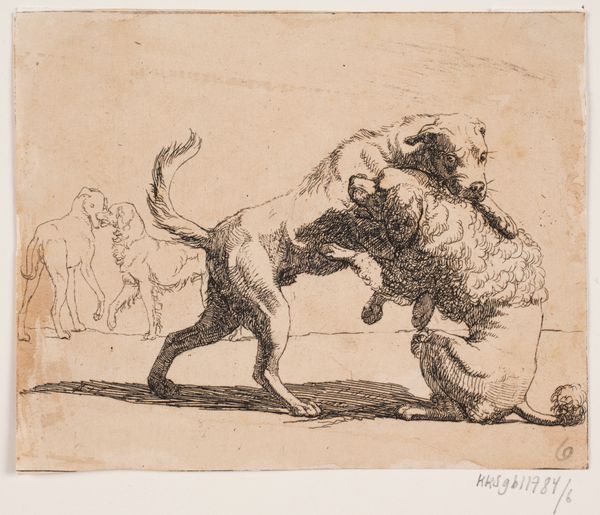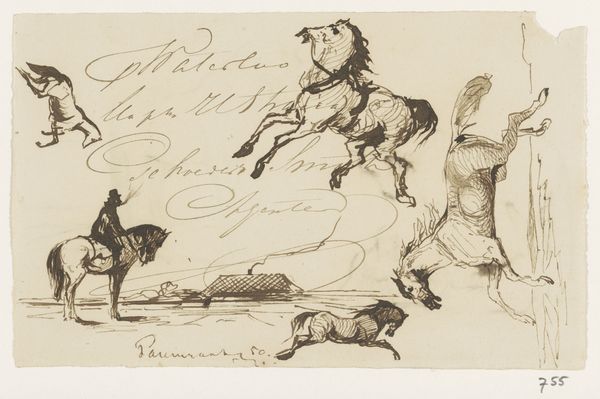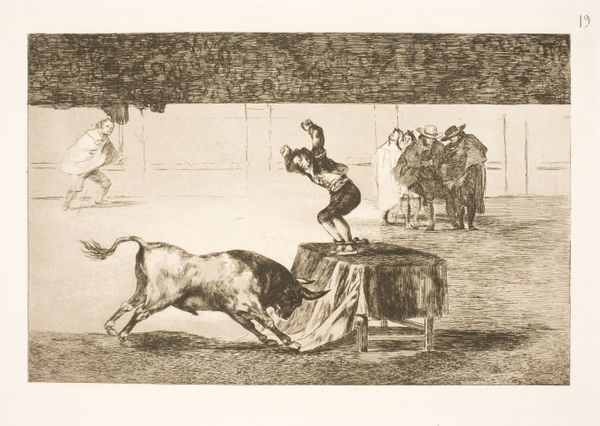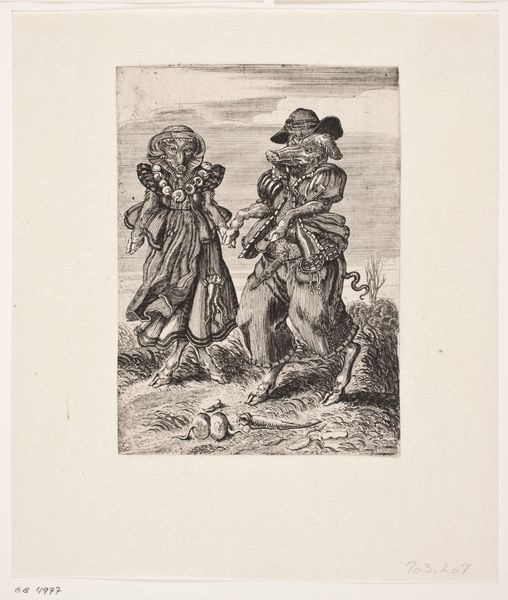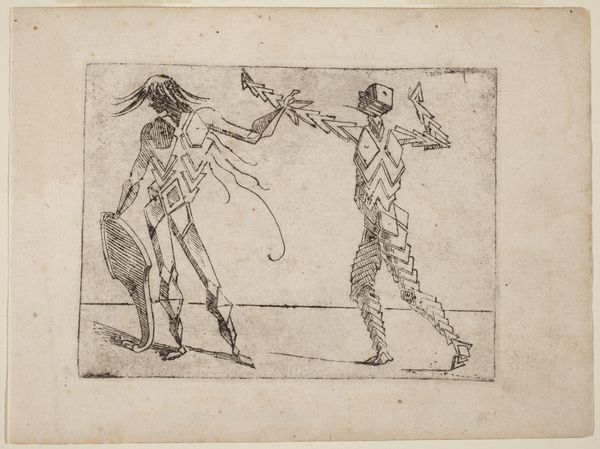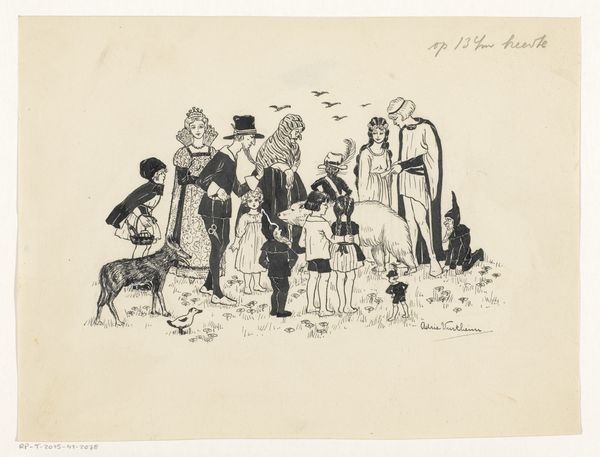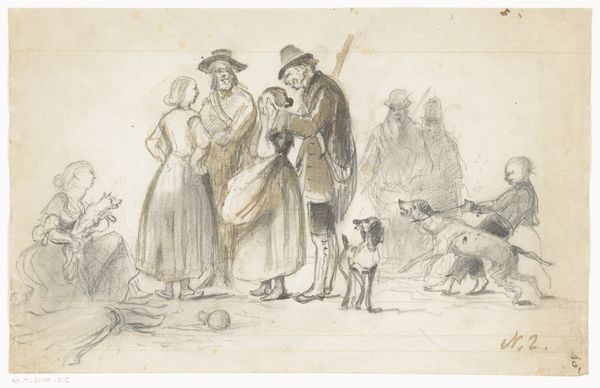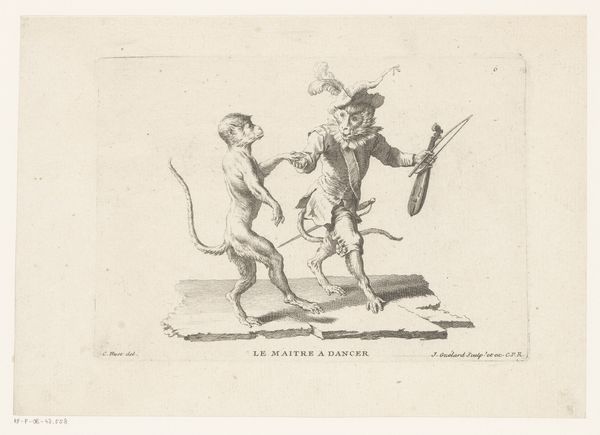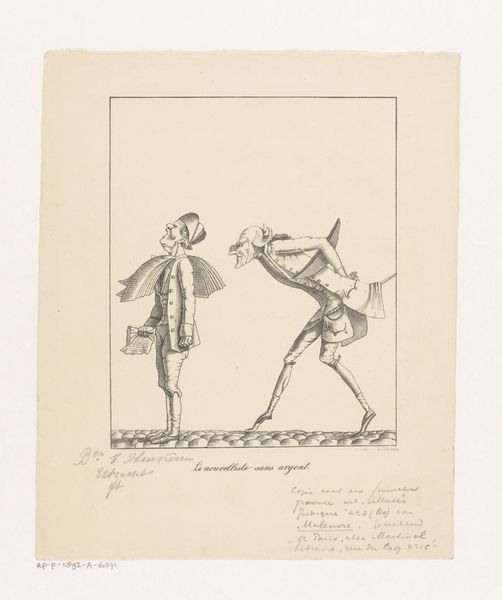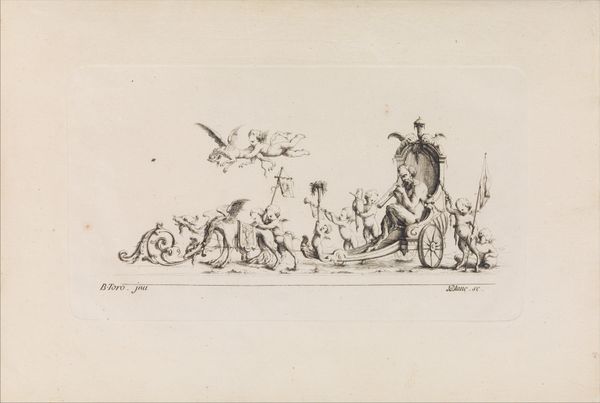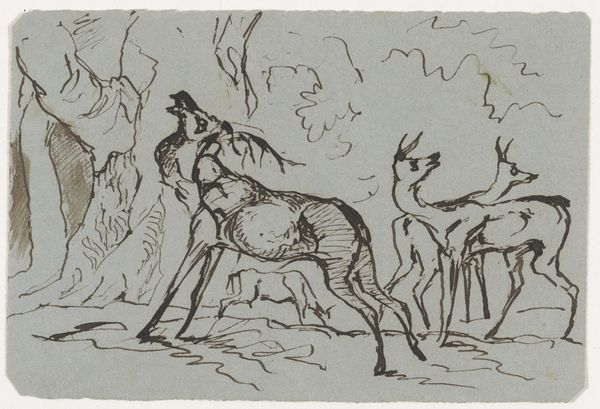
drawing, lithograph, print, paper
#
drawing
#
lithograph
# print
#
caricature
#
paper
#
symbolism
Dimensions: 314 × 453 mm (image); 419 × 541 mm (sheet)
Copyright: Public Domain
Editor: This lithograph from 1899, “Goya's Return to his Homeland” by Jean Veber, currently residing at the Art Institute of Chicago, certainly has a disturbing tone. There's a darkness, a hint of satire, and quite a few unsettling figures. What strikes you when you view this work? Curator: It strikes me as a potent blend of social commentary and personal anxieties, rendered through symbolic figures. The floating woman atop the donkey, the skeletal figure, the bourgeois gentleman… Each evokes potent, pre-existing imagery. Have you considered what Goya, a famous artist, meant for artists who followed him? Editor: Not really. Goya was obviously a master, but how does Veber's caricature tie in? Curator: The “return” in the title signals more than just a physical homecoming. Consider Goya’s legacy of social critique. What’s being ‘returned’ to here is a sensibility, a tradition of unflinching observation. Do you see visual cues suggesting mortality and vanity? Editor: The skeleton and the well-dressed man, perhaps? Their contrast is striking, with death right next to finery. And that donkey… it looks overburdened. Curator: Precisely. Veber uses recognizable symbols to critique the establishment. That donkey is an age-old symbol, weighed down, but notice who is riding high on it: a fashionable lady! Each component speaks volumes about Veber's attitude toward society's structures. How does the symbolism contribute to your understanding of the artwork now? Editor: I see a strong commentary about class, power, and the inevitability of death, all wrapped in this dark humor. Curator: Yes, by employing enduring symbolic images, Veber bridges the gap between cultural memory and present-day critique. I find that quite fascinating. Editor: It really gives the piece a lot more layers to consider. I hadn't thought about the legacy and continued commentary that images can represent. Thanks!
Comments
No comments
Be the first to comment and join the conversation on the ultimate creative platform.
